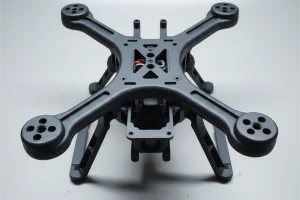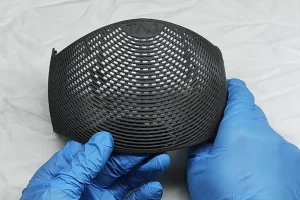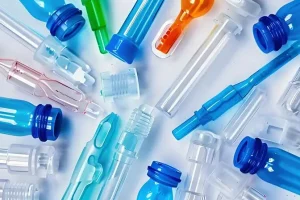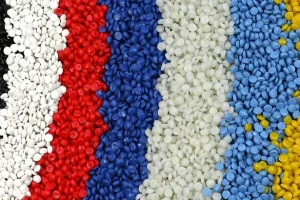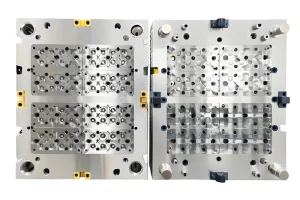Introduction:
Manufacturing plastic parts requires selecting an efficient, precise, and cost-effective manufacturing process to achieve efficiency, precision, and cost effectiveness. Of all the available methods, plastic injection molding has become one of the most preferred processes within industry due to its versatility and myriad benefits – and is therefore becoming the go-to method in many different industries. We will discuss why plastic injection molding process has become such an indispensable method here.

With an increasing demand for plastic parts, manufacturers are searching for efficient ways to meet production requirements without compromising quality. Injection molding has proven itself an indispensable solution in manufacturing due to its ability to consistently create intricate parts. By understanding its benefits we can appreciate its significance across various industries as well as how its introduction could revolutionize production of plastic components.
Why is injection molding preferred over other processes?
Injection molding has gained significant preference over other manufacturing processes due to several compelling reasons. Let’s explore why plastic injection molding process is favored in the industry and examine its key advantages:
1.Precision and Complexity:
Injection molding enables the production of highly precise and intricate parts with remarkable accuracy. The process involves injecting molten plastic material into a custom-designed mold, which allows for the replication of intricate details consistently. This level of precision is vital in industries such as aerospace, automotive, and medical, where even the slightest deviation can have serious consequences. The ability to manufacture complex parts with intricate geometries and features sets injection molding apart from other processes.

2.Efficiency and Production Capabilities:
Injection molding is renowned for its efficiency and high production capabilities. The process facilitates the creation of multiple parts simultaneously by using multi-cavity molds. This increases production efficiency, as each cycle of the molding machine can yield multiple finished parts. The ability to produce a large number of parts within a short timeframe makes injection molding ideal for high-volume production runs. This efficiency translates into cost savings and shorter lead times, making it a preferred choice for manufacturers.
Additionally, injection molding offers faster production cycles compared to many other processes. The automated nature of injection molding equipment and the continuous operation allow for swift and seamless production. The ability to meet tight production deadlines and satisfy customer demands in a timely manner further enhances the appeal of injection molding.

In conclusion, injection molding’s precision, ability to handle complex designs, and efficient production capabilities make it the preferred choice for manufacturing plastic parts. The process’s emphasis on precision, coupled with its efficiency in producing large quantities of parts, sets it apart from other manufacturing processes. As technology continues to advance, injection molding is poised to further improve production efficiency and revolutionize the manufacturing landscape.
II. Advantages of Injection Molding Compared to Other Plastic Manufacturing Processes
A. Precision and Consistent Quality
Injection molding excels in achieving high precision and consistent quality in manufactured parts. The process utilizes custom-designed molds that precisely shape the molten plastic material. This level of control ensures that each injection molded part is produced with exceptional accuracy, meeting tight tolerances required in industries such as aerospace and medical. Consistent quality is crucial for applications where reliability and performance are paramount.
B. Cost Efficiency and High Volume Production delays
Injection molding offers significant cost advantages, particularly for high-volume production runs. The initial tooling costs may be higher than other processes, but the per-unit cost decreases as the volume increases. By utilizing multi-cavity molds, multiple parts can be produced simultaneously, maximizing production efficiency and reducing costs. The ability to create identical plastic parts at a rapid rate ensures cost-effectiveness in high-volume manufacturing.

C. Wide Material Selection and Design Flexibility
Injection molding supports a wide range of plastic materials, including thermoplastics, elastomers, and thermosetting polymers. This versatility allows manufacturers to select the most suitable material for each application based on physical and chemical properties. Additionally, plastic injection moulding enables design flexibility, facilitating the integration of complex features, such as undercuts, inserts, ribs, bosses, and thin walls. This flexibility empowers designers to create innovative and functional products with intricate details.
D. Minimal Waste and Environmental Benefits
Injection molding generates minimal waste during the manufacturing process. Any unused or waste plastic can be recycled and reused, reducing environmental impact. This recycling capability aligns with sustainable practices and the growing demand for eco-friendly manufacturing solutions. By minimizing plastic waste and promoting recycling, injection molding contributes to a more environmentally responsible approach to production.

E. Faster Production Cycles and High Output
Injection molding enables faster production cycles compared to many other manufacturing processes. The automated nature of the equipment, coupled with the continuous operation, ensures swift and efficient production. The high output rate and efficiency of injection molding equipment allow for the production of a large number of parts within a short timeframe. This is particularly advantageous for meeting tight deadlines and fulfilling high-volume demands.
F. Compatibility and Versatility
Injection molding demonstrates compatibility with various materials, expanding its range of applications. The process can replace metal components with plastic, offering cost savings and versatility. Plastic injection molded parts can exhibit virtually identical properties to their metal counterparts, making them suitable for a wide array of industries, including automotive, electronics, and consumer goods. The ability to manufacture complex part designs, aligning with key design elements and achieving tight tolerances, further enhances the versatility of injection molding.

By harnessing these advantages, injection molding proves to be a cost-effective, versatile, and environmentally friendly manufacturing process capable of producing high-quality plastic molding components efficiently. Its compatibility with diverse materials, design flexibility, and minimal waste generation position injection molding as a leading choice in the realm of plastic manufacturing processes.
III. Disadvantages of Injection Molding Compared to Other Processes
While injection molding offers numerous advantages, it is important to consider its limitations and potential disadvantages:
1.Higher Initial Tooling Manufacturing Costs:
Injection molding involves the creation of custom molds, which can incur higher initial tooling costs compared to other plastic manufacturing processes. Designing and fabricating the molds require specialized expertise and equipment. These upfront costs can be a barrier for small-scale or prototyping projects, making injection molding less economical for low-volume production runs.
2.Longer Lead Time for Tooling and Mold Creation:
The process of designing and manufacturing molds for injection molding can take considerable time. The complexity of the part design, precision requirements, and the need for multiple iterations can extend the lead time. This longer lead time must be factored into project timelines, especially when tight deadlines are involved.

3.Limitations for Low-Volume Production:
Injection molding is optimized for high-volume production runs due to the upfront tooling costs and longer setup time. Consequently, it may not be cost-effective for low-volume production or prototyping where the quantities required are relatively small. Other manufacturing processes, such as 3D printing or CNC machining, are better suited for such scenarios, as they offer more flexibility and lower setup costs.

It is essential to evaluate the specific requirements of a project when considering injection molding as the manufacturing process. While it offers numerous benefits for high-volume production, its higher initial costs, longer lead time for tooling, and limited feasibility for low-volume production should be taken into account. By understanding these limitations, manufacturers can make informed decisions about the most suitable manufacturing process for their specific needs.
IV. When to Choose Injection Molding Over Additive Manufacturing?
Injection molding and additive manufacturing (commonly known as 3D printing) are two distinct manufacturing processes, each with its own strengths and limitations. While additive manufacturing has gained popularity in recent years, there are specific situations where injection molding remains the preferred choice. Let’s explore when injection molding is preferable to additive manufacturing:
1.High Volume Production:
Injection molding is highly efficient for high-volume production runs. The process’s ability to produce a large number of parts in a short time, especially with the use of multi-cavity molds, makes it more cost-effective for large-scale manufacturing. In contrast, additive manufacturing, although versatile, can be time-consuming and less efficient for producing large quantities of parts.
2.Precision and Accuracy:
When precision and accuracy are crucial, injection molding offers distinct advantages. The process enables the production of parts with tight tolerances and intricate details consistently. This precision is especially important in industries like aerospace, automotive, and medical, where component reliability and performance are paramount. Additive manufacturing, while improving in accuracy, may not match the level of precision achieved through injection molding.

3.Material Selection and Performance:
Injection molding provides a wider range of material options compared to additive manufacturing. Manufacturers can choose from a variety of plastic materials with specific physical and chemical properties tailored to their application requirements. This versatility allows for the production of parts with superior mechanical, thermal, or chemical resistance properties. Additive manufacturing, on the other hand, has limitations in material selection, with a narrower range of materials available.

4.Cost-Effectiveness:
For high-volume production, injection molding offers cost advantages over additive manufacturing. While the initial tooling costs for injection molding can be higher, the per-unit cost decreases significantly as the production volume increases. The speed and efficiency of injection molding contribute to its cost-effectiveness for large-scale manufacturing. Additive manufacturing, while offering flexibility in design and prototyping, can be costlier for producing large quantities of parts.
In summary, injection molding is preferable over additive manufacturing in situations that require high-volume production, precision, a wide range of material selection, and cost-effectiveness. When volume, part complexity, and material performance are key considerations, injection molding’s efficiency, precision, and cost advantages make it the preferred choice for many industries. Additive manufacturing, with its strengths in prototyping and customization, remains valuable for low-volume production, rapid prototyping, and design iteration.

Conclusion
Injection molding stands as a highly advantageous manufacturing process for producing plastic parts, offering a multitude of benefits. Throughout this article, we have explored the reasons why injection molding is favored over other processes, highlighting its precision, efficiency, wide material selection, and design flexibility.
The precision achieved through injection molding allows for the production of intricate and complex parts with remarkable accuracy, meeting tight tolerances demanded by industries such as aerospace and medical. The efficiency of the process, coupled with high-volume production capabilities, ensures cost-effectiveness and shorter lead times, making it an ideal choice for large-scale manufacturing.
The wide range of plastic materials compatible with injection molding provides manufacturers with the flexibility to select materials that best suit their specific application requirements. This versatility, combined with the design flexibility afforded by injection molding, allows for the integration of complex features and the creation of innovative and functional plastic parts.
Despite the emergence of new technologies, injection molding continues to dominate the manufacturing industry. Its proven track record, consistent quality, and cost efficiency make it the preferred choice for a wide range of industries, including automotive, medical, and consumer goods. The process’s ability to produce high-quality plastic parts efficiently, with minimal waste and in large volumes, solidifies its position as a leading manufacturing method.
As the demand for plastic parts continues to grow, injection molding remains at the forefront of the industry, driving innovation and meeting the evolving needs of various sectors. Its advantages, including precision, efficiency, material selection, and design flexibility, make injection molding an indispensable process for manufacturers seeking to deliver high-quality plastic components to a diverse range of industries.


